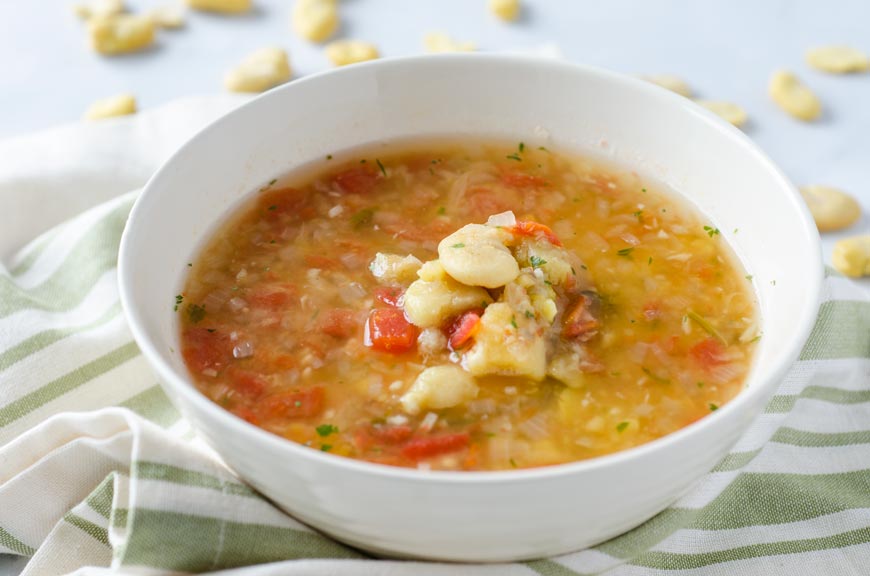Fava bean soup (Maccu)

Portions: Serves 6
Ingredients:
- 450 g/1 lb dried fava beans, peeled
- 2.3 litres/4 pints cold water
- 1 bunch wild fennel sprigs, washed and chopped, or 2 teaspoons fennel seeds
- Salt and freshly ground pepper
- Olive oil
Other ingredients (optional):
- 225 g/8 oz ditalini or other small pasta onion, chopped
- 4 ripe tomatoes, skinned
- 2 tablespoons olive oil
Preparation:
Soak the fava beans in water overnight, then drain. If you are not able to buy the beans already peeled, buy 550 g/1¼ lb of unpeeled beans, then peel them after they have soaked. Put the drained and peeled beans in a heavy flameproof soup pot (preferably of terra cotta) together with the 2.3 litres/4 pints water, the fennel (sprigs or seeds), and some salt. Bring to a boil and simmer uncovered for 2 hours or until the beans are completely tender and can be mashed against the side of the pot with a wooden spoon. Stir frequently. At this point you must decide whether you wish to eat your maccu as a simple purée or to have it with pasta. In the latter case, thin the maccu with a 225-450 ml/8-16 fl oz of boiling water, then add the pasta. Stir very frequently as the pasta is cooking, since maccu thickens and sticks very easily. For an added fillip, sauté chopped onion and tomatoes in oil until tender and stir in at the last minute. All versions require that you correct the salt and add a liberal sprinkling of black pepper and of olive oil. Leftover maccu can be poured onto a platter and left to harden, then cut into strips, floured, and fried in a little olive oil a special treat for the peasant families of the past. Wild fennel is just one of the seasonings that modern Sicilians have inherited from the classical world. The broth that Apicius calls for in many of his recipes is garum, an essence made from fermenting salted fish that was commonly used to flavour Roman cooking. In spite of the rotten reputation that garum has acquired over the centuries, Vehling maintains that at its best it was akin to our modern anchovy sauce. In the letters written by the Marquis of Ormonde during his Sicilian travels, there is an all too brief reference to a nineteenth century version of the same: The flesh [of the tuna] is good, and a sauce called garum is prepared from it. Although salted tuna has disappeared, both anchovies and sardines, either in salt or in oil, occur in contemporary Sicilian cooking with much the same frequency and to much the same end as garum in the Roman cuisine. In Syracuse, for example, the most characteristic pasta dish is spaghetti with an anchovy sauce. There are many variants of this all across the island.

